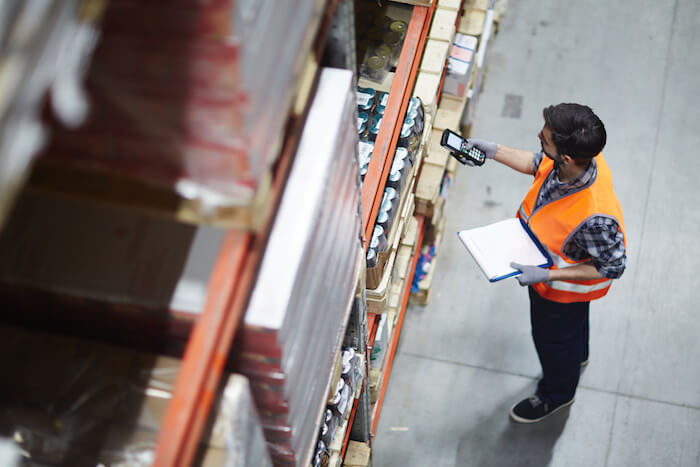Live from SAPinsider Studio: Ken Moir Discusses Standardizing Labeling for the Modern Supply Chain
Ken Moir, VP of Marketing at NiceLabel, joins the SAPinsider Studio at the SCM, CRM, and IoT 2016 event in Las Vegas to talk about labeling challenges and how NiceLabel and SAP work together to deliver a standardized labeling and marking process that mitigates risk and increases agility.
Here is an edited transcript of the discussion:
Natalie Miller, SAPinsider: Hi this is Natalie Miller of SAPinsider and we’re at the CRM, SCM, and IoT event here in Las Vegas. And I’m joined today by Ken Moir, VP of Marketing at NiceLabel. Hi Ken, how are you today? Thanks so much for joining me today.
Explore related questions
Ken Moir, NiceLabel: Hi, Natalie. I’m great, thank you.
Natalie: I was hoping we could start by telling me a little bit about NiceLabel and your role.
Ken: I’m VP of Marketing. NiceLabel makes labeling and marking solutions. SAP supports labeling, but it doesn’t support the growing needs of the modern supply chain. So we make it real easy for companies to do labeling and marking to optimize the process, mitigate risk, and increase agility.
Natalie: As you are talking to customers at NiceLabel, what are some of the challenges that you are hearing from them in terms of supply chain management?
Ken: The biggest thing that we see is – we call it legacy system modernization – which is modernizing old ways of doing labeling, moving away from SAPscripts, and doing consolidation; not having 1,000s of label variations but having one universal or a few universal labels. We call that consolidating label templates. The other thing that we see with many businesses is – they call it IT portfolio rationalization. So they’re really trying to not just consolidate all the label variations, but consolidate the solutions — not having SAPscripts, Smartforms, and various labeling solutions, but trying to have one solution. And it’s all about increasing the agility of the business and empowering the business users, making it real easy for the business users to do things and not having to rely on IT. If you don’t have to rely on IT and you actually empower the business user, you increase agility and you also reduce labor costs. So, it’s a win, win.
The other big thing that we see is customers have zero tolerance for unplanned downtime. Nobody wants unplanned downtime. So what they really want is predictive maintenance, they want short production set up times and they want to know nothing is going to go wrong and they aren’t going to be stopping production because of labeling errors on their labels.
Natalie: What changes in the marketplace have increased these challenges?
Ken: We are seeing lots of changes from a regulation point of view across many industries, including medical devices, pharmaceutical, and food and beverage, and we are also seeing that we need to respond to customers faster. Internally, we are seeing the drive for reducing costs, operational efficiency, and no tolerance for unplanned downtime.
Natalie: In terms of labeling, what are some of the advantages to a company in standardizing the process?
Ken: When a company standardizes or centralizes, there’s a whole bunch of direct and indirect benefits they can realize. The first benefit they can realize is empowering the business users. When they empower the business users, they increase their agility, they reduce their reliance on IT, and they also reduce cost because they don’t have to pay the higher label costs. So empowering business users is one of the main drivers, but then when we get to the actual process, the best practices for labeling is to have a document management system. If you have a document management system, you can then check labels into the document labeling system, you can have revisions, you can have workflows, you can have publishing, you can go from development to test to production, and you don’t test on a live system – everything is controlled.
Natalie: How does NiceLabel help SAP customers in improving their labeling?
Ken: What we’ve done is we’ve learned from what all of our customers have been doing over many years and we’ve actually tried to implement best practices and actually productize the best practice. What we have now is an SAP ABAP package. And with this ABAP package you can transport into SAP in a few seconds, so you can have ultra-fast deployment. It’s like a label management solution in a box — you put it inside SAP and you can then easily connect to this ABAP package from any of your SAP solutions. And the benefits you get are you get real label previews inside SAP with the master data, with the label, and you get on demand printing. And I say on demand because when you press print, the label prints instantly and it’s on demand. So the ABAP package makes it easy to connect to NiceLabel’s label management solution. The label management solution is running on an external server. The label management solution is the label designer. It’s a document management system, so you can check labels and you can manage revisions, you can do workflows, approvals, publishing, put it to production, and it just makes it really easy. It’s all about ease of use; it’s all about being agile; it’s all about mitigating risk; and it’s all about optimizing the process.
Natalie: Can you share some best practices or advice to companies who are evaluating their labeling process?
Ken: Get your previews inside SAP; make sure that your on demand printing is on demand; make sure you have a document management system. Make sure you don’t test in production and you don’t let someone make a component for your product without someone approving it. One of the best practices that I would say to you is to have a modern document management system that lets you do revisions, workflows, and approvals.
Natalie: All right, Ken. Well, thank you so much for being here. I really appreciate it.
Ken: Thank you.
Natalie: Again, this is Natalie Miller of SAPinsider and we’ve been talking with Ken Moir of NiceLabel.




